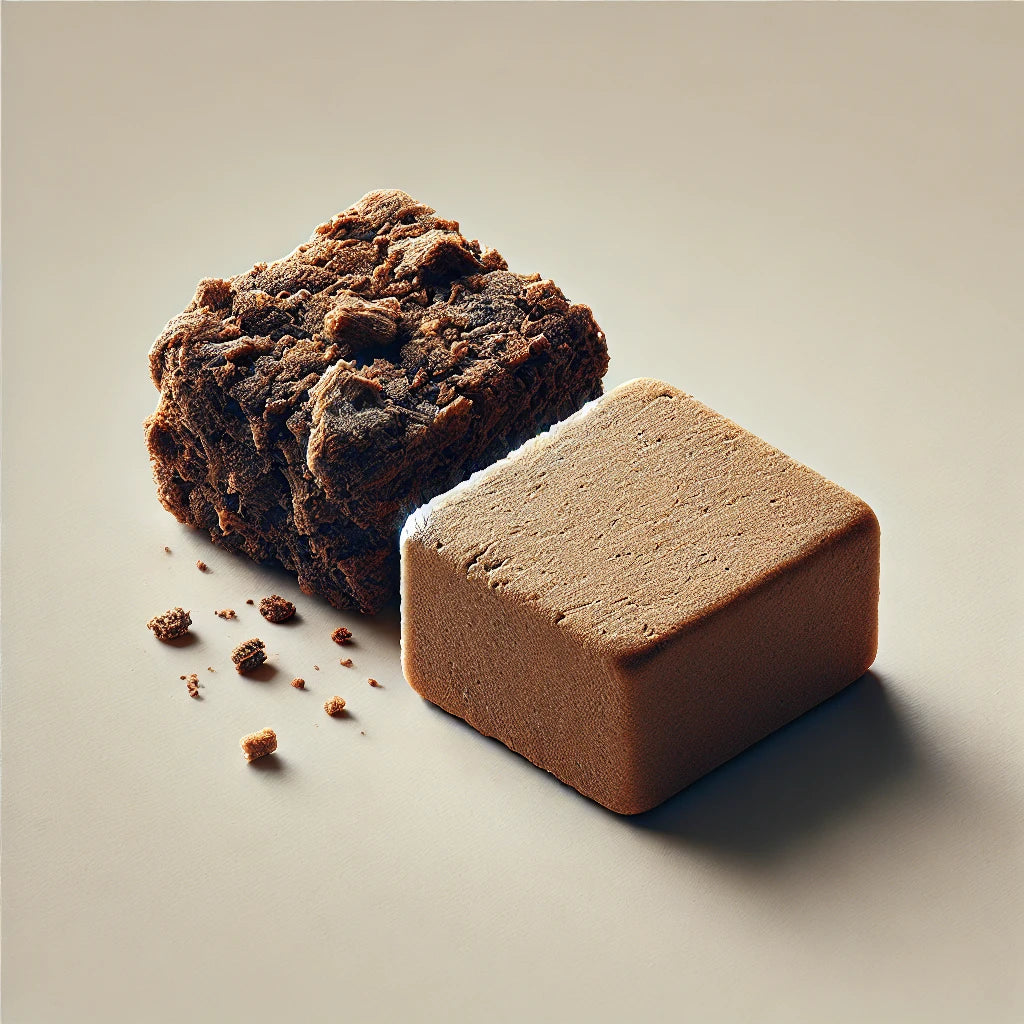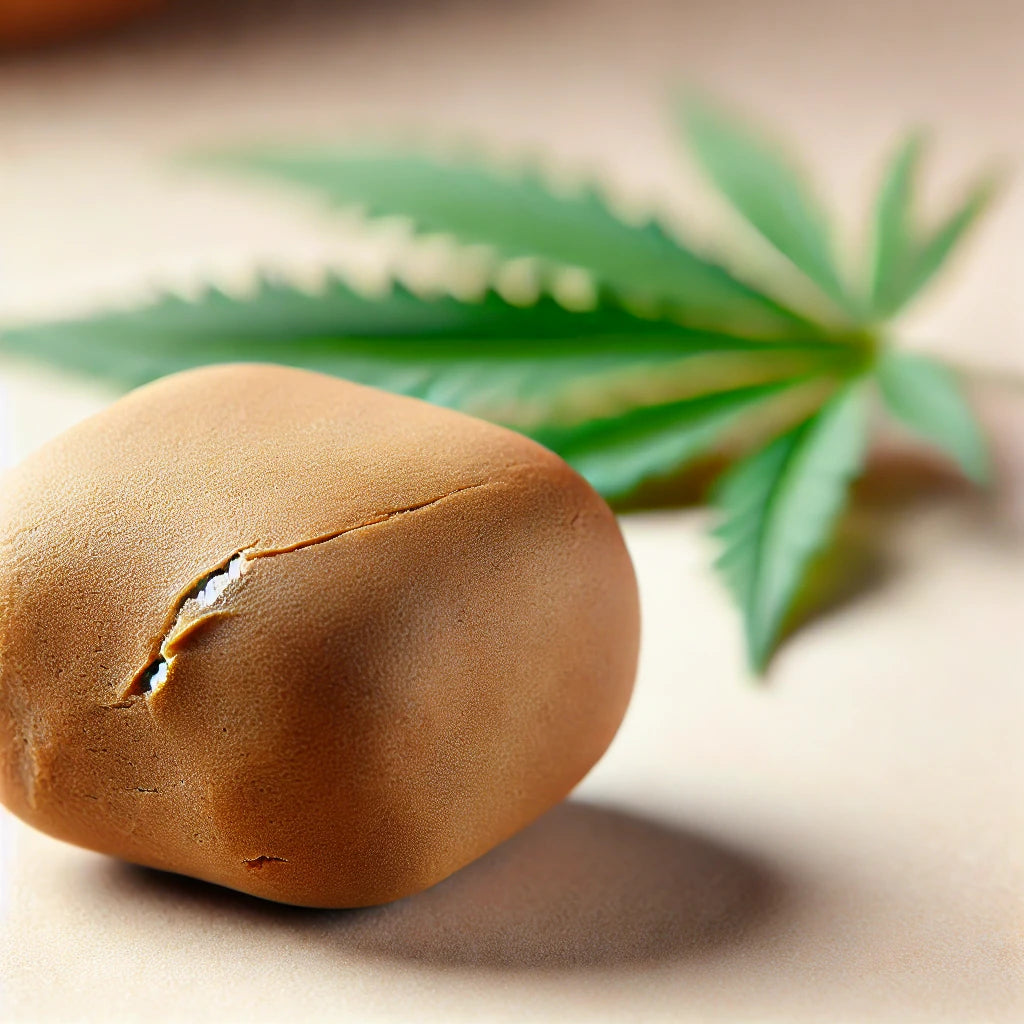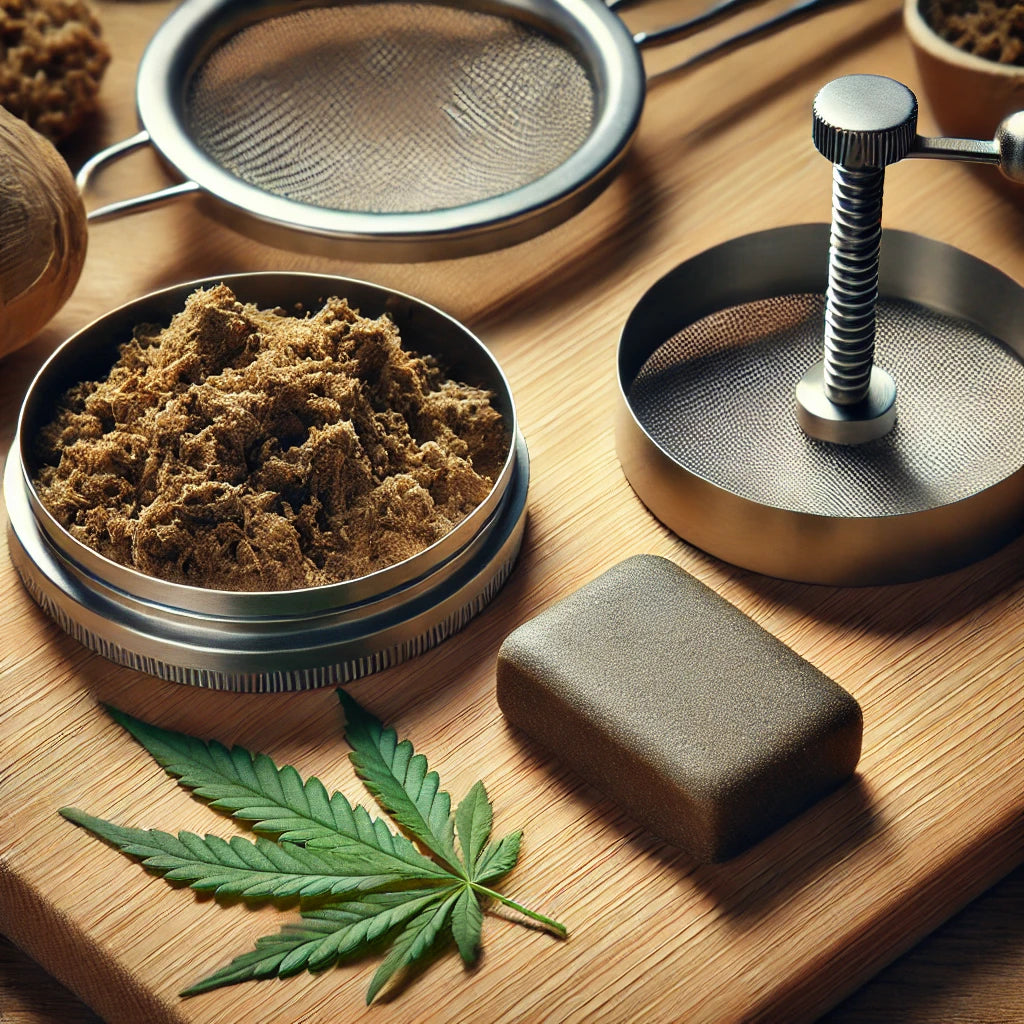Hashish, often referred to simply as hash, is a concentrated form of cannabis obtained by extracting resin glands (trichomes) from the flowers of the cannabis plant. The appearance of hash can vary greatly depending on the origin, production method and cannabis strain used. In most cases, the color palette ranges from light brown to dark brown, sometimes even to almost black hash. The surface can be smooth and shiny, especially with more compressed hash, or slightly grainy and sandy if it is less compacted. Hand-sifted hash from regions such as Afghanistan or India is often sticky and soft, while dry-sifted hash, which is obtained by sieving dried flowers, tends to be crumbly and firm.
What does good hash look like?
Judging the quality of hashish requires a trained eye and a fine nose. High-quality hashish should have a uniform and characteristic coloration, which depends on the cannabis strain used. Another sign of quality is the texture: good hash feels firm, but should not be too hard. When it gets warm, it should become slightly pliable without being overly sticky - this indicates the right balance between moisture and resin content. A strong but pleasant aroma, reminiscent of the original cannabis plant, is also an indication of high-quality processing. The so-called bubble test can also provide information: if the hash begins to bubble when heated and burns cleanly, it is of high quality. Smoke that turns black or the absence of bubbles could indicate impurities.


The texture and color of hashish
The texture of hashish plays a crucial role in determining its quality. High-quality hashish is firm, but not hard, and feels slightly sticky under heat, which indicates a high resin content. The color can vary depending on its origin: Moroccan hash is often light brown, while Afghan hash is dark brown to black. However, there are also reddish or greenish hues, depending on the cannabis strain used and the processing. If the inside of the hash is greenish in color, this may indicate the presence of plant material, which indicates inferior processing. Another warning sign is excessive stickiness at low temperatures, which could indicate that additional oils have been added to increase the weight of the product.
The effect of hashish
Hashish is prized for its intense psychoactive effects, which are often stronger than those of cannabis flowers. This is due to the higher concentration of cannabinoids, especially THC, in hashish. However, the effect depends heavily on the strain from which the hash was made. Hash from sativa plants usually has an energizing and euphoric effect, while indica-based hash has a more relaxing and calming effect. In addition to the desired effects, very strong hash can also cause unwanted side effects such as paranoia, anxiety or memory loss, especially when consumed in excess. It is therefore important to choose the right strain and dosage to achieve the desired experience.
The different types of hashish
There are many different types of hashish, which differ in their production methods and origins. Moroccan hashish is particularly popular and known for its smooth consistency and spicy aroma. Afghan hash, which often has a deeper, darker color, is known for its strong, sticky consistency and intense effect. Lebanese hash, which comes in reddish or blonde hues, is often hard-pressed and has a smooth, shiny surface. Each of these varieties offers a unique experience and is produced using specific traditional methods that have been perfected over centuries.




